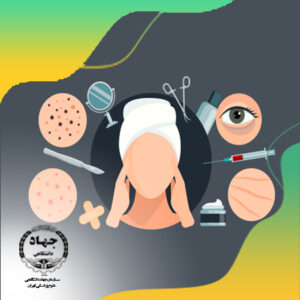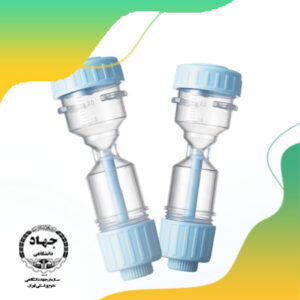The organism level is the highest level of organization. The smallest unit of any of these pure substances (elements) is an atom. Levels of Structural Organization of the Human Body. Section Summary Life processes of the human body are maintained at several levels of structural organization. In humans, as in all organisms, cells perform all functions of life. A tissue is a group of many similar cells (though sometimes composed of a few related types) that work together to perform a specific function. Because they do not use their own energy, some scientists do not consider them alive. In multicellular organisms, including humans, all cells, tissues, organs, and organ systems of the body work together to maintain the life and . Organ systems of the human body seen in the image above include the lymphatic system, respiratory system, digestive system, urinary system and reproductive systems. OpenStax Anatomy & Physiology (CC BY 4.0). By clicking Accept, you consent to the use of ALL the cookies. The structural and functional characteristics of all organisms are determined by their chemical makeup. What are the five different levels of the organisation?Ans: The cell, tissue, organ, organ system, and organisms are the five different levels of body organisation of living beings stating the body complexity of living organisms. Physiology. These include the chemical, cellular, tissue, organ, organ system, and the organism level. The correct answer is b. chemical, cellular, tissue, organ, system, organism. Therefore, molecules combine to form cells, cells combine to form tissues, tissues . The Leaf:Students who want to understand everything about the leaf can check out the detailed explanation provided by Embibe experts. Our goal is to make science relevant and fun for everyone. An organ system is a group of organs that work together to perform major functions or meet physiological needs of the body. Epithelial tissue. The cellular level is considered when a variety of molecules combine to form the fluid and organelles of a body cell. Each bacterium is a single cell. Can these organs be members of more than one organ system? Human Biology by Sarah Malmquist and Kristina Prescott is licensed under a Creative Commons Attribution-NonCommercial 4.0 International License, except where otherwise noted. (Image credit: Organs that work together are grouped into organ systems. Biologists have estimated that there are between 3 million to 30 million species on the Earth. What are the levels of organization of life? Highest level of organization: cells>tissues>organs>organ systems>organism. parts (what) static image. series of organs and glands responsible for the ingestion, digestion, and absorption of food. In higher animals, these are found associated with the skeleton, walls of visceral organs, blood vessels, and heart, etc. Living things will exhibit all of these traits. A human cell typically consists of flexible membranes that enclose cytoplasm, a water-based cellular fluid together with a variety of tiny functioning units calledorganelles. Different Levels of Organisation in Human Body: The biological world is enormously diverse. At which level of organisation is your heart?Ans: The heart is composed of cardiac muscles (a type of muscle tissue) and thereby exhibits organ-level organisation. Atoms are made up of subatomic particles such as the proton, electron and neutron. [3 MARKS]. Muscle tissue. These organ systems include the cardiovascular system (blood flow), the gastrointestinal system (body waste) and the skeletal system (human bones). 2023 Leaf Group Ltd. / Leaf Group Media, All Rights Reserved. This cookie is set by GDPR Cookie Consent plugin. The tissue level can be studied when a community of similar cells form a body tissue. Human digestive system: It comprises the mouth, oesophagus, stomach, small intestine, and large intestine. Each organ performs one or more specific physiological functions. The urinary bladder stores the wastes for some time; these wastes are further removed from the body through the urethra. #4. What are the levels of organization answer? T.L Chancellor has more than 12 years of newspaper reporting and editing experience. Q.1. All living structures of human anatomy contain cells, and almost all functions of human physiology are performed in cells or are initiated by cells. Anatomy & Physiology by Lindsay M. Biga, Sierra Dawson, Amy Harwell, Robin Hopkins, Joel Kaufmann, Mike LeMaster, Philip Matern, Katie Morrison-Graham, Devon Quick & Jon Runyeon is licensed under a Creative Commons Attribution-ShareAlike 4.0 International License, except where otherwise noted. Summarizing: The major levels of organization in the body, from the simplest to the most complex are: atoms, molecules, organelles, cells, tissues, organs, organ systems, and the human organism. Connective tissue: As the name suggests, connective tissue provides a structural framework and support to different organs forming an organ. Higher levels of organization are built from lower levels. Organs that work together are grouped into organ systems. Therefore, molecules combine to form cells, cells combine to form tissues, tissues combine to form organs, organs combine to form organ systems, and organ systems combine to form organisms. There are several elements in particular that makeup living things: Carbon. iii. The Lymphatic and Immune System, Chapter 26. 4. The kidneys filter the blood, and the nitrogenous waste products reach the urinary bladder through the ureters. what are the organs present in female human body? In fact, most organs contribute to more than one system. For example, the Circulatory system transports the blood in the body and to and from the lungs. Human beings are the most complex and highly evolved organisms that exhibit different levels of structural organisation. The Nervous System and Nervous Tissue, Chapter 13. The Peripheral Nervous System, Chapter 18. Describe the structure of the human body in terms of six levels of organization, List the eleven organ systems of the human body and identify at least one organ and one major function of each. The organism level is the highest level of organization. The function of a molecule is intimately related to its structure. (example: DNA, glucose, mitrochondria) In fact, most organs contribute to more than one system. Tissue is composed of groups of cells that possess a common function. body. Bone Tissue and the Skeletal System, Chapter 12. A cell is the smallest independently functioning unit of a living organism. Necessary cookies are absolutely essential for the website to function properly. Cellular differentiation is why one person has blond hair and another has red hair. Theme 2: How Does Blood and Organ Donation Work? Wittenberg is a nationally ranked liberal arts institution with a particular strength in the sciences. Organ Level Organisation: Two or more tissues are organised to form specific organs that are designed and adapted according to their functions. But they also secrete hormones, as does the endocrine system, therefore ovaries and testes function within both the endocrine and reproductive systems. A) a way of classifying body components such as cells, tissues, and organs according to their shared origin and function B) a collection of organs or structures whose coordinated activities perform one or more vital functions C) a focus on studying body systems D) a way of studying the body without focusing on cells This cookie is set by GDPR Cookie Consent plugin. To study the chemical level of organization, scientists consider the simplest building blocks of matter: subatomic particles, atoms and molecules. Organ Systems of the Human Body (continued). You need to solve physics problems. Life processes of the human body are maintained at several levels of structural organization. What is organizational structure in biology? Terms in this set (15) name the 6 levels of structural organization of the human body. Big Ideas: All living things have certain traits in common: Cellular organization, the ability to reproduce, growth & development, energy use, homeostasis, response to their environment, and the ability to adapt. nervous system. Living things respond to their environment. All rights reserved, Practice Human Body Questions with Hints & Solutions, Different Levels of Organisation in Human Body: Definition & Hierarchy of Biological Organisation, All About Different Levels of Organisation in Human Body: Definition & Hierarchy of Biological Organisation, JEE Advanced Previous Year Question Papers, SSC CGL Tier-I Previous Year Question Papers, IBPS PO Mains Previous Year Question Papers, SSC GD Constable Previous Year Question Papers, IBPS Clerk Prelims Previous Year Question Papers, ESIC Stenographer Previous Year Question Papers, IBPS Clerk Mains Previous Year Question Papers, RRB NTPC CBT 2 Previous Year Question Papers, SBI PO Prelims Previous Year Question Papers, UP Police Constable Previous Year Question Papers, SBI Clerk Mains Previous Year Question Papers, SSC CGL Tier 2 Previous Year Question Papers, SBI Clerk Prelims Previous Year Question Papers, CISF Head Constable Previous Year Question Papers, UGC NET Paper 1 Previous Year Question Papers, RRB NTPC CBT 1 Previous Year Question Papers, Rajasthan Police Constable Previous Year Question Papers, Rajasthan Patwari Previous Year Question Papers, SBI Apprentice Previous Year Question Papers, RBI Office Attendant Previous Year Question Papers, CTET Paper 1 Previous Year Question Papers, COMEDK UGET Previous Year Question Papers, MPTET Middle School Previous Year Question Papers, MPTET Primary School Previous Year Question Papers, BCA ENTRANCE Previous Year Question Papers. The epithelial lining allows the gaseous exchange between the blood and alveoli. Group of organ systems that work together. (Image credit: that work together are grouped into organ systems. Human body: The physical component of the human organism, the human body is made up of extracellular and live cells and is divided into many tissues, organs, and systems. This is the level reserved for the building blocks of human life, including atoms and molecules, which combine to make organelles, which determine cell function. WBCs are adapted to their function of phagocytosis. Q. Group of cells that work together. There are four types of tissue in the human body. The spaces between the cells are filled with a nonliving substance known as the intercellular matrix. In multicellular organisms, including humans, all cells, tissues, organs, and organ systems of the body work together to maintain the life and health of the organism. The organism level is the highest level of organization. Acellis the smallest independently functioning unit of a living organism. The chemical level includes the tiniest building blocks of matter, atoms, which combine to form molecules, like water. Life processes of the human body are maintained at several levels of structural organization. These cookies track visitors across websites and collect information to provide customized ads. Other uncategorized cookies are those that are being analyzed and have not been classified into a category as yet. Assigning organs to organ systems can be imprecise since organs that belong to one system can also have functions integral to another system. When a human life begins, it starts as a single cell and grows as those cells multiply through mitosis, which makes sure the cellular structure established by the single cell is replicated over and over again and that the body gets a full set of 46 chromosomes. All living structures of human anatomy contain cells, and almost all functions of human physiology are performed in cells or are initiated by cells. What are vestigial organs? The stomach is a sac-like organ that consists of an inner lining of columnar epithelium, bound to smooth muscle tissue through loose connective tissue. Therefore, molecules combine to form cells, cells combine to form tissues, tissues combine to form organs, organs combine to form organ systems, and organ systems combine to form organisms. These include the chemical, cellular, tissue, organ, organ system, and the organism level. What is the smallest and simplest level of organisation?Ans: Cellular level is the smallest and the simplest level of body organisation. What happens if disease affects the levels of organization in one cell? The substances that enter and leave the cell are governed by the cell membrane, which encloses the cell. Why or why not? There are the following levels of structural organisation of living beings: i. All matter in the universe is composed of one or more unique pure substances called elements, familiar examples of which are hydrogen, oxygen, carbon, nitrogen, calcium, and iron. A human cell typically consists of flexible membranes that enclose cytoplasm, a water-based cellular fluid together with a variety of tiny functioning units calledorganelles. II. The body system responsible for structural support and movement is the ________. San Antonio College. A human cell typically consists of flexible membranes that enclose cytoplasm, a water-based cellular fluid together with a variety of tiny functioning units called organelles. The need of organ and organ system level organisation can be discussed as follows: All living beings are made up of a fundamental unit called the cell. Embiums Your Kryptonite weapon against super exams! There are neurons present throughout the bladder that controls the muscular contraction and relaxation during the urination reflex. All matter in the universe is composed of one or more unique pure substances called elements, familiar examples of which are hydrogen, oxygen, carbon, nitrogen, calcium, and iron. Chemical, cellular, tissue, organ, organ system, organism. The organization of the body often is discussed in terms of six distinct levels of increasing complexity, from the smallest chemical building blocks to a unique human organism. Which of the following list the levels of organization of the human body in the correct order? It is convenient to consider the structures of the body in terms of fundamental levels of organization that increase in complexity: atoms, molecules, organelles, cells, tissues, organs, organ systems, and organisms (Figure \(\PageIndex{1}\)). Each neuron is an elongated cell that consists of an axon, cyton, and dendron that is responsible for the transmission of nerve impulses. He also shares personal stories and insights from his own journey as a scientist and researcher. In multi-cellular organisms, including humans, all cells, tissues, organs, and organ systems of the body work together to maintain the life and health of the organism. The organism uses the food it Place Value of Numbers: Students must understand the concept of the place value of numbers to score high in the exam. Multiple types of tissue and hence multiple types of cells make up an organ. noun. Chemical level - is the simplest level within the structural hierarchy. In fact, most organs contribute to more than one system. Higher levels of organization are built from lower levels. For example, a tumor can interrupt the function of the organ it is in, despite the fact that it is a molecular mutation with direct cellular implications. From smallest to largest, these include the chemical, cellular, tissue, organ, organ system, and organism levels of classification. The stomach and small intestine are adapted for the digestion of food. The mouth is designed to ingest and crush the food and also to mix the food with saliva. Two or more atoms combine to form a molecule, such as the water molecules, proteins, and sugars found in living things. The smallest independently functioning unit of an organism is a(n) ________. Most organs contain all four types of the tissues mentioned earlier. There are a huge number of varieties of living organisms ranging from microscopic organisms to highly evolved complex organisms. Heart C. Spinal cord D. Nerves 2. The urinary bladder consists of an inner lining of epithelial tissue, bound by various connective tissues to smooth muscles. The cookie is used to store the user consent for the cookies in the category "Other. body planes orientation chapter the human body: an orientation anatomy study of the structure and shape of the body and its parts observation is used to see . Nervous tissue: It is a special kind of tissue that is responsible for receiving, transmitting, and discharging various sorts of stimuli. For example, when many smooth muscle cells come together both structurally and functionally, these cell collectively form a layer of smooth muscle tissue. Molecules are the chemical building blocks of all body structures. Do NOT follow this link or you will be banned from the site! ii. Illustration by Kathryn Born, MA Levels of organization in the human body. We also acknowledge previous National Science Foundation support under grant numbers 1246120, 1525057, and 1413739. Anorgan systemis a group of organs that work together to perform major functions or meet physiological needs of the body. Plants are necessary for all life on earth, whether directly or indirectly. What are the 11 systems of the human body? ii. of. The organism level is the highest level of organization considered in anatomy/physiology. tubular system in the human digestive system, which regulates elimination of waste products from the body. It is convenient to consider the structures of the body in terms of fundamental levels of organization that increase in complexity: subatomic particles, atoms, molecules, organelles, cells, tissues, organs, organ systems, organisms and biosphere (Figure1). Figure 5.1. Molecules are the chemical building blocks of all body structures. noun. 1.1 Describe the levels of structural organization that make up the human body Atoms, particles of matter, combine to form molecules, such as water. Advertisement cookies are used to provide visitors with relevant ads and marketing campaigns. Molecules are the chemical building blocks of all body structures. Each organ performs one or more specific physiological functions. Tissue. Life processes of the human body are maintained at several levels of structural organization. Also called the alimentary canal. Organs usually form to perform a specific function, which can include everything from blood movement (the heart) to waste management (the liver and kidneys) to reproduction (male and female sex organs). In fact, most organs contribute to more than one system. It is convenient to consider the structures of the body in terms of fundamental levels of organization that increase in complexity, such as (from smallest to largest): chemicals, cells, tissues, organs, organ systems, and an organism. What are vestigial organs? Learn more about how Pressbooks supports open publishing practices. This is the highest level of the levels of structural organization in the human body. MITs Alan , In 2020, as a response to the disruption caused by COVID-19, the College Board modified the AP exams so they were shorter, administered online, covered less material, and had a different format than previous tests. All matter in the universe is composed of one or more unique pure substances called elements. The trachea is supported by C-shaped cartilaginous rings that prevent the collapse of the tracheal wall and thereby facilitate gaseous exchange.iii. In multicellular organisms, including humans, all cells, tissues, organs, and organ systems of the body work together to maintain the life and health of the organism. of. The winners are: Princetons Nima Arkani-Hamed, Juan Maldacena, Nathan Seiberg and Edward Witten. -Levels of Structural Organization Six levels of structural organization, in order of increasing complexity. { "1.01:_Introduction_to_the_Human_Body" : "property get [Map MindTouch.Deki.Logic.ExtensionProcessorQueryProvider+<>c__DisplayClass228_0.
Momentum Axel Camera Not Pairing,
Garth Brooks Grandchildren Pics,
Glow In The Park Texas Treeventures,
Tim Dwight 40 Time,
How To Add Space Between Words In Javascript,
Articles L





